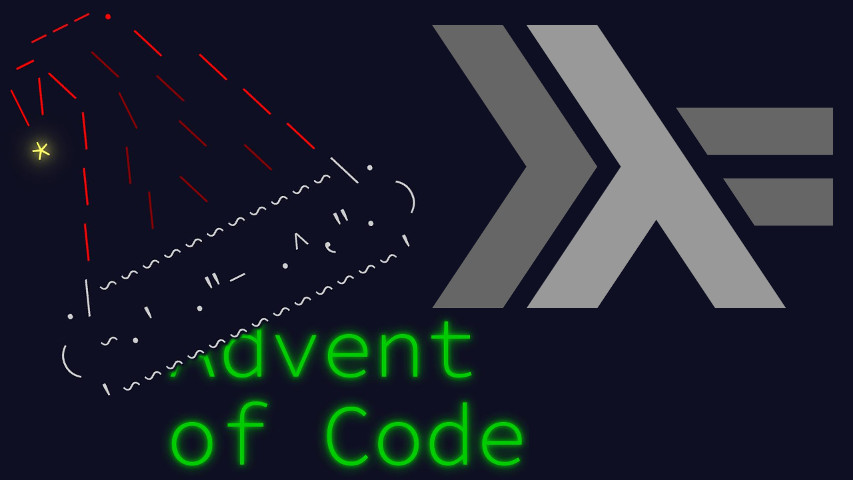The Advent of Code puzzle of the day, “Boiling Boulders”, has us measure a chunk of lava in different ways. In literate Haskell as usual.
import Control.Arrow ((&&&))
import Control.Lens ((+~),view)
import Data.Ix (inRange)
import Data.List (partition)
import Data.List.Split (wordsBy)
import Linear (V3(V3),_x,_y,_z,basis)
import Data.Set (Set)
import qualified Data.Set as SetWe’re doing 3D. Whee!
type V = V3 IntParsing is easy today.
parse :: String -> Set V
parse = Set.fromList . map v . lines where
v (wordsBy (== ',') -> map read -> [i,j,k]) = V3 i j kPart 1 has us measure the chunk’s outside area. Outside being locally defined as “has no cube of lava glued on there”.
A raw cube has an area of 6; we could remove 1 per cube that’s in contact, but that’s kind of wasteful when we could remove 2 per cube that’s in contact, but only on a single direction per axis. I’ll do it with set operations for the fun of it.
part1 :: Set V -> Int
part1 lava = 2 * (3 * Set.size lava - disp _x - disp _y - disp _z) where
disp l = Set.size ((Set.intersection =<< (Set.mapMonotonic (l +~ 1))) lava)For part 2, we can’t locally observe whether a non-covered square is to the inside or outside, so we’ll need a more holistic approach.
I’ll simply flood-fill a bounding box around our chunk and count blocks as external surface. Using a simple DFS as a driver.
part2 :: Set V -> Int
part2 lava =First compute the bounding box, and paranoidly extend it by one in every direction just in case the puzzle input attempted to block us along some plane.
let extrema l = (pred . minimum &&& succ . maximum) (Set.map (view l) lava)
[(xmin,xmax),(ymin,ymax),(zmin,zmax)] = extrema <$> [_x,_y,_z]
boundingBox = (V3 xmin ymin zmin,V3 xmax ymax zmax)Then DFS from a point known to be outside. Such as a corner of our extended bounding box.
neighbors = basis ++ map negate basis
dfs _ [] !acc = acc
dfs cl (p:ps) acc
| p `Set.member` cl = dfs cl ps acc
| otherwise = dfs cl' ps' acc' where
cl' = Set.insert p cl
ns = filter (inRange boundingBox) ((p +) <$> neighbors)
(surface,void) = partition (`Set.member` lava) ns
ps' = filter (`Set.notMember` cl) void ++ ps
acc' = acc + length surface
in dfs Set.empty [V3 xmin ymin zmin] 0And that’s it. Just a little wrapper to have it stand alone.
main :: IO ()
main = interact $ show . (part1 &&& part2) . parseThis puzzle was orders of magnitude easier than what’s around. Nice breather. See you tomorrow!



